Sorting Out The Best Way To Carry Concealed Takes Time
Buying a defensive firearm is an important part of the concealed carry lifestyle. However, just owning a gun does you little good if it isn’t ready for use when you need it the most. A defensive firearm needs to be within arm’s reach when you need it, not locked away in a box under your bed. Finding the best way to carry concealed is absolutely essential to living a safe and secure armed lifestyle. Let’s look at some of the ways to achieve that goal.
We’ve already written about choosing a concealed carry gun, and we’ve also talked about finding the best concealed carry holster for your situation. Now let’s talk about the best way to bring these two elements together so they are with you all the time. Carrying a gun around with you means carrying something that weighs a pound or more and can be the size of a large paperback book. This means that your current wardrobe isn’t going to be up to the task of keeping your gun out of sight.
There are essentially four types of holsters out there:
- Outside the Waistband (OWB) holsters, carried on the outside of your pants
- Inside the Waistband (IWB) holsters, where the gun and holster go in between you and your beltline
- Appendix Inside The Waistband (AIWB), where the gun is carried on the front of your body in-between your clothing and your body
- Pocket holsters, which are suitable only for smaller guns that can fit in a pocket
Let’s look at pros and cons of each of these types of holsters
Inside The Waistband (IWB) Holsters
Reasons To Use An IWB holster
- It’s going to conceal more of the gun. This is a no-brainer: The gun is mostly tucked into your pants, so less of it shows on the outside. Also, as it’s inside the shape of your pants, your body’s natural curves will help disguise the fact you’re packing heat.
- It’s going to be more stable. This one is not-so-obvious. An IWB holster has three points of contact with your body: Two on the belt itself, and one where the holster presses up against your body.
Reasons Not To Use An IWB Holster
- It’s harder to grip the gun. Your gun is a lot closer to your body in an IWB holster, which means it’s going to take a little more effort to wrap your thumb around the grip of your pistol when you’re drawing your gun.
- You need new pants. A pistol is about an inch or so thick, revolvers much more so, and I don’t need to tell you what adding an inch to your waistline means to your wardrobe.
Outside The Waistband (OWB) Holsters
Reasons To Use An OWB Holster
- Less change in your lifestyle. Aside from your gun belt (and no matter which option you choose, you need a good gun belt), you’re ready to roll.
- It’s easier to grip your gun. Your pistol is further out from your body when it’s outside rather than inside your trousers, and therefore it’s easier for you to get a good, firm grip on your gun before you draw. This might not seem like much, but a good grip is essential to both accuracy and a fast draw.
Reasons Not To Use An OWB Holster
- There’s two points of contact on your body versus three. This means that your gun can move around on your waistband if you don’t get a good gun belt to help hold it in place.
- It’s further from your body, and therefore, harder to conceal. This can be overcome with a holster like a pancake OWB model that hugs the body a little more than other OWB models, so do your research to find what works for you.
Appendix Inside The Waistband (AIWB) Holsters
Reasons To Use An AIWB Holster
- Your belly area is, in general, a flatter surface than the rest of your body. This means it’s easier to hide the flat surfaces of your pistol in this area than it is on your curvier hip region.
- Based on my experience and the experience of my friends, your draw is going to be a little bit faster with this method. With a little practice, I speeded things up by a half-second once I switched to AIWB.
Reasons Not To Use An AIWB Holster
- All that stuff we said about increased pant sizes when we talked about IWB holsters also applies to AIWB holsters.
- The consequences of a negligent discharge are always bad. They are especially bad with an AIWB holster. Be aware of this, and adjust your safety procedures as needed.
Pocket Carry
Reasons To Use A Pocket Holster
- A pistol in your pants pocket is almost invisible. Even a bulgy revolver looks like an indiscriminate lump in a holster inside of your pocket.
- It really doesn’t matter what kind of cover garment you wear, (more on those later), your gun is hidden by your pants pocket, not by your shirt.
- Getting your hand on your gun inside of your pocket is natural, smooth and innocuous, and having a gun in your hand halves your draw time.
Reasons Not To Use a Pocket Holster
- By their very nature, they’re restricted to small guns that you can fit in your pocket. These have pros and cons of their own, which we discuss over here, but let’s just say that victory in a gunfight against large numbers of attackers or one at longer ranges are theoretical at best if you carry a pocket gun.
- Your draw is fast with a pocket gun if you start with your hand on your gun, inside your pocket. If not, your draw is… not fast, probably double the time when compared to using an IWB or OWB holster.
- In addition to this, drawing from a pocket holster when you’re sitting down is almost impossible. Plan accordingly.
Keeping It Secret, Keeping It Safe
Now that we’ve talked about the best way to carry a concealed firearm, let’s talk about some of the ways to conceal it. There are, in essence, two types of concealment garment, or cover garment as they are also called.
The first is closed-front cover garments such as an untucked shirt of some kind. The advantages of this type of concealment is that it is everywhere you look, so no one is going to think twice if they see you dressed this way. However, a tight, clingy shirt is going to show off your gun, so loose is good for this type of cover.
The second type of cover garment is an open-front concealment, most often an open shirt, light jacket or suit jacket of some kind. These work well with OWB holsters, but these can swing open at inopportune moments, allowing all the world to see that you’re carrying a handgun. Also, open-front garments are not recommended for AIWB carry, as they don’t cover the area where you keep your gun.
Holster Choice Is Uniquely Personal
Which is best? That all depends on what you’re comfortable with, where you live and what people are wearing around you. I’ve lived most of my life in the sunnier parts of the United States. Jackets of any kind are not commonly seen in my surroundings, so I carry my gun hidden underneath an untucked t-shirt. If I lived in, say, Minnesota, an open-front cover garment might be more of an option for me.
All of this, however, is built on the foundation of a good gun belt. A gun belt is significantly stiffer than a normal belt. This allows you to spread the weight of your gun around your entire waist, rather than have it concentrated where your holster is attached to your belt. This accomplishes two things. Your gun is now a lot more comfortable to carry for longer periods of time, and it has less tendency to tilt out and become noticeable to others.
You’ll note that I’ve not talked about purse carry or some other form of off-body carry. There’s a reason for this. Purse carry or backpack carry or whatever is suitable only when you’ve tried every single thing we’ve talked about here, and it hasn’t worked for you. Off body carry is your worst-case scenario: Use it when you have no other alternative.
Let’s Talk With Some Experts
To help you find those other alternatives we enlisted the aid of Alex Sasone, The Suited Shootist. He’s dedicated to helping people get a better understanding about what might be the best way to carry concealed based on how you dress and where you live.
“It’s very common for people in the gun world to tell newcomers that they should ‘dress around the gun,” Sasone said. “This is well intentioned advice, but it’s superficial. What it really means is that you need to integrate your personal safety into your lifestyle. Is the time and effort you need to find a way to carry a large gun, like a Glock 34 or a full size 1911, better spent elsewhere, like learning how to de-escalate a sticky situation, or getting into better shape?”
“When you’re figuring out the best way to carry concealed,” Sasone continued, “make sure what you’re doing is appropriate to where you live. Not just your circle of friends, but the larger environment as well. You and your friends might look completely normal hanging out at the range, but the range isn’t real life. Take a look at what other people in your social circle are wearing, and do your best to match that. I’ve found that a polo shirt and khaki pants are acceptable for almost any occasion.”
Women And Concealed Carry
Women have some unique challenges when it comes to finding the best to carry concealed for their lifestyle. We enlisted the help of Annette Evans of On Her Own to help women work out the best way to keep their concealed carry gun on them, not near them.
“Women can own a personal style and yet still create a consistent look that is friendly to concealed carry. A gun is an interruption to your silhouette, so the same clothing that helps disguise bumps, lumps and muffin tops helps us disguise our gun,” said Annette. “Stiffer fabrics don’t drape as much, and that can make them better to conceal your firearm. Keep in mind, though, that overly formal, overly informal and overly baggy clothes stand out like a sore thumb, so tailor your look to who is around you.”
“One of the biggest problems women have with concealed carry is a lack of pockets and a lack of belt loops,” Evans continued. “Those can be overcome with the PHLster Enigma, which is an absolute game-changer for women and concealed carry, and I’ve also found that the Flashbang bra holster is a very viable option for more experienced gun owners. You may also want to look at some method for clipping your gun onto your slacks or skirt. However, keep in mind that the weakest link in that setup is the fabric of the clothing it’s clipped to. The weight of your gun and holster can create sagging with stretchy fabrics, which is both uncomfortable for you and can give away the fact you’re carrying a gun. My suggestion is to start by carrying your gun in either an IWB or AIWB holster, and see what works best for you.”
What’s The Best Way To Carry Concealed For You?
The best way to carry concealed is going to differ from person to person. Everyone is shaped slightly differently, so the holster and gun combination that’s right for me might not work for you. Personal choices in clothing and dressing for the weather will also affect how you’re going to conceal your defensive pistol. On top of this, there is your choice of pistol. A large 1911 or full size Glock is a lot harder to conceal than a small 38 revolver.
Where should you start? I started out carrying a small 9mm single stack pistol in an IWB holster, hidden under an untucked t-shirt. I stuck with that combination for years and years. It worked with my tastes in clothing and blended well with where I lived at the time. If more discretion was needed, I carried a small 380 in a pocket holster. Everybody is different and your needs may be different, but if you’re looking for the best way to carry concealed, that’s where I’d start.
Whichever combination of holster, gun and cover garment you chose, it’s important to emphasize once again that concealed carry means carrying your gun whenever and wherever it’s allowed by law. You may not wish to carry it every day, but you will certainly wish you had it with you when it will be needed. Avoid that problem and keep yourself safe by making carrying your gun a part of your daily routine.

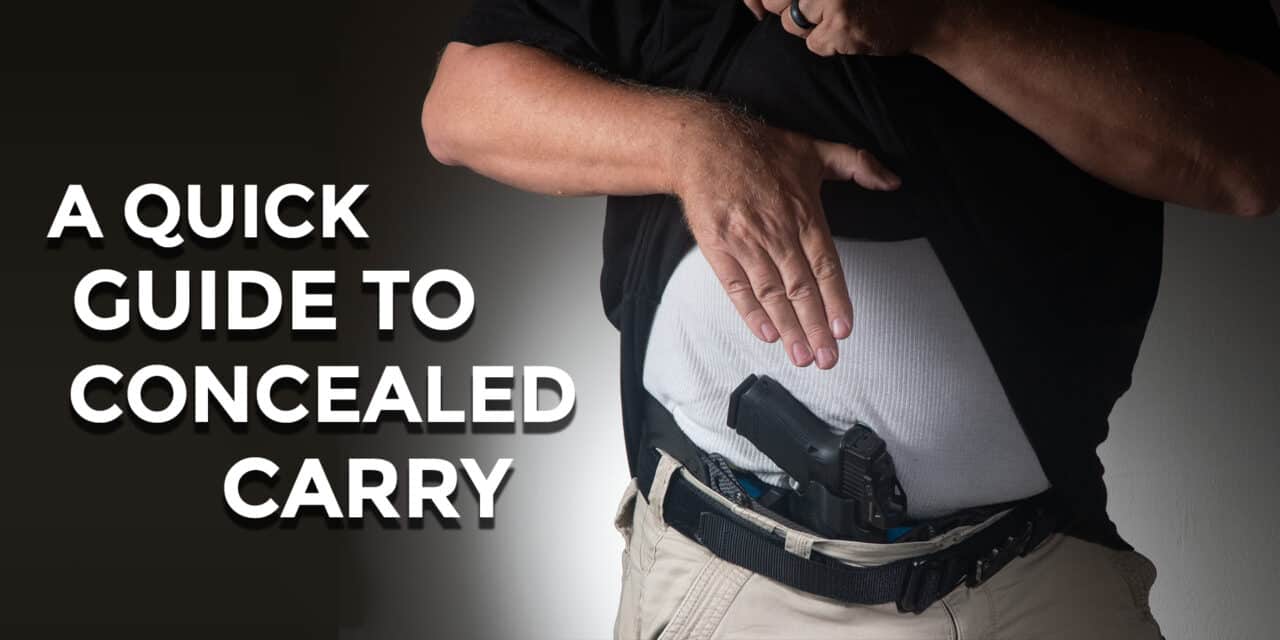
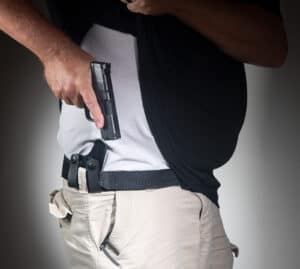
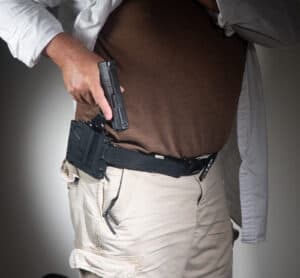
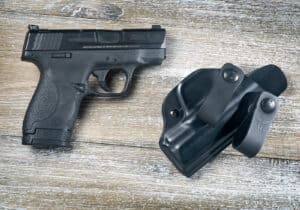
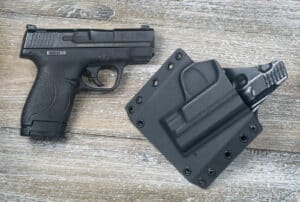

Fugggitttaboudt ANY pocket holster along with ANY holster that does not have a retaining strap (both across the back of the pistol and one that snaps onto your belt). Pocket holsters don’t allow a consistent, repeatable draw due to constantly shifting around in your pocket. And the LAST thing you want is your firearm popping out of your holster or your cheap belt ‘clip’ allowing your holster and firearm to sail away when you are in a physical fight or running.